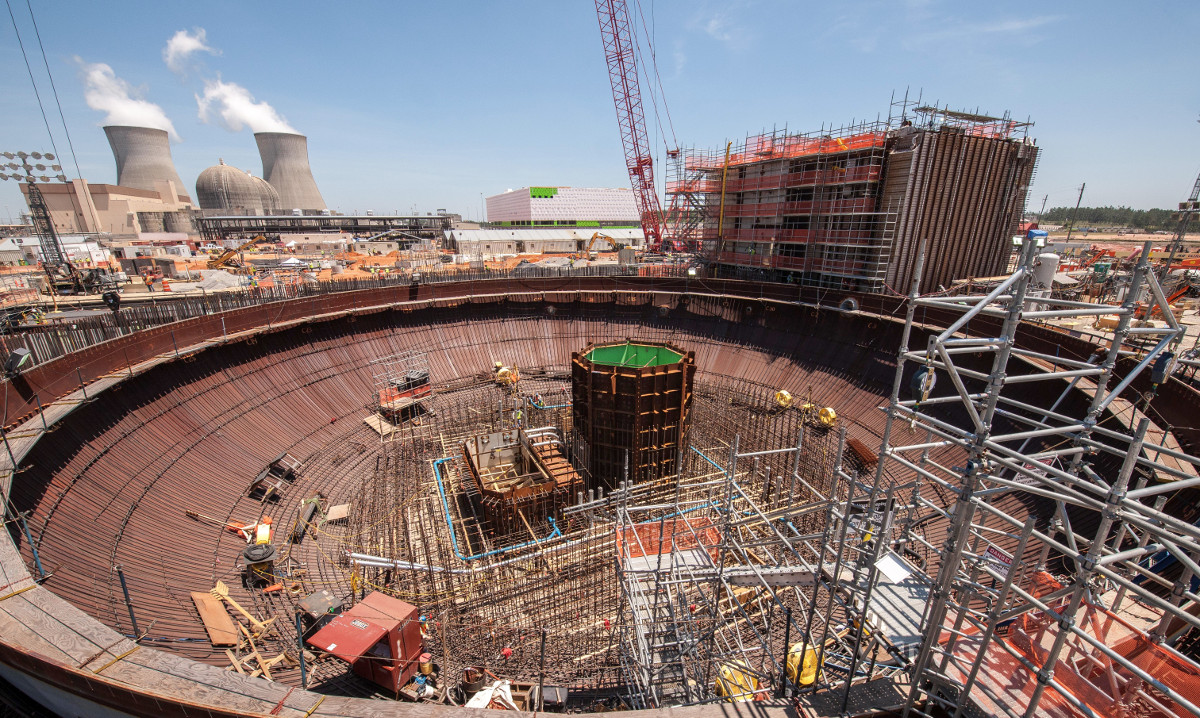Go with the (Better) Flow?

Photo of construction of Vogtle Unit 3 courtesy of Georgia Power.
Study: Highly Fluid Concrete Can Reduce Time and Labor of Nuclear Plant Construction
Self-consolidating concrete offers potential to significantly reduce time and construction costs associated with placing concrete for nuclear power plants, according to an EPRI study.
When conventional concrete is placed, technicians must temporarily liquefy it with vibrators so that it flows around obstacles and fills forms. This is particularly labor-intensive work in building nuclear plants’ complex structures with reinforcing steel. Developed in Japan in the mid-1980s, self-consolidating concrete contains chemicals that promote fluidity and stability and has been used successfully in commercial and industrial buildings and nuclear plants in the United States and China. When placed in one area of a concrete form, it flows throughout the form without the use of vibrators, potentially reducing time and labor.
Laboratory tests determined that it has slightly higher compressive strength relative to conventional concrete, given comparable water-cement proportions. Self-consolidating concrete exhibited slightly more shrinkage and slightly less splitting tensile strength. In test molds for power plant foundations and walls, self-consolidating concrete flowed freely through complex structures (see video).
As with conventional concrete, researchers found that careful selection and proportioning of ingredients can help avoid problems such as segregation. Different mixtures may be needed for different plant structures.
Watch a video of self-consolidating concrete flowing through a test mold.

